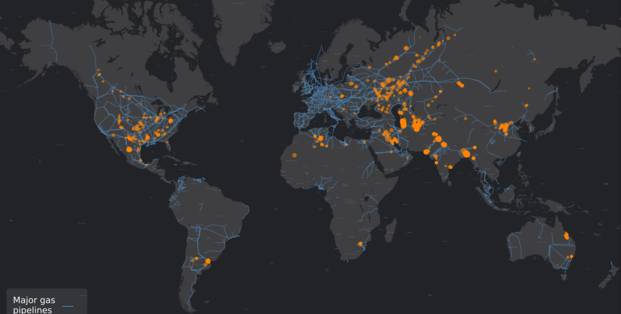Summary: New research reveals global methane emissions have risen by 20% over the past two decades, with the rate of increase accelerating in recent years, posing significant challenges to climate change mitigation efforts.
Estimated reading time: 7 minutes
Methane, a potent greenhouse gas, is accumulating in the Earth’s atmosphere at an alarming rate, according to the latest data from the Global Carbon Project. Despite global efforts to reduce emissions, methane levels have reached their highest point in at least 800,000 years, putting the world on track for warming well above the Paris Agreement targets.
Why it matters
Methane is a short-lived but extremely powerful greenhouse gas, warming the atmosphere nearly 90 times faster than carbon dioxide in the first 20 years after release. Rapidly reducing methane emissions is considered crucial for limiting near-term global warming and its associated impacts, such as extreme weather events and sea-level rise.
The Accelerating Methane Problem
The new research, published in Environmental Research Letters and Earth System Science Data, paints a concerning picture of global methane trends:
- Atmospheric methane concentrations are now 2.6 times higher than pre-industrial levels.
- Total annual methane emissions have increased by 61 million tons (20%) over the past two decades.
- In 2020, the atmosphere accumulated 42 million tons of methane – twice the average annual increase of the 2010s.
Rob Jackson, chair of the Global Carbon Project and lead author of one of the studies, emphasizes the urgency of the situation: “Right now, the goals of the Global Methane Pledge seem as distant as a desert oasis. We all hope they aren’t a mirage.”
Sources of Increasing Emissions
The research identifies several key sectors driving the rise in methane emissions:
- Coal mining
- Oil and gas production and use
- Cattle and sheep ranching
- Decomposing food and organic waste in landfills
Marielle Saunois of the Université Paris-Saclay in France, lead author of the Earth System Science Data paper, notes regional differences: “Only the European Union and possibly Australia appear to have decreased methane emissions from human activities over the past two decades. The largest regional increases have come from China and southeast Asia.”
In 2020, human activities accounted for nearly 400 million tons or 65% of global methane emissions. Agriculture and waste contributed about two tons of methane for every ton from the fossil fuel industry.
Human Influence on Natural Sources
A significant update in this latest methane budget is the attempt to quantify human influence on emissions from sources previously considered entirely natural, such as wetlands and waterways.
For instance, reservoirs built by humans are estimated to emit about 30 million tons of methane per year due to decomposing submerged organic matter. Jackson explains, “Emissions from reservoirs behind dams are as much a direct human source as methane emissions from a cow or an oil and gas field.”
The researchers estimate that about a third of wetland and freshwater methane emissions in recent years were influenced by human-caused factors, including reservoirs and emissions increased by fertilizer runoff, wastewater, land use changes, and rising temperatures.
Challenges and Implications
The current trajectory of methane emissions aligns with the most extreme scenarios used by climate scientists, potentially leading to global warming above 3 degrees Celsius (5 degrees Fahrenheit) by the end of this century. This level of warming would have catastrophic consequences for ecosystems, human societies, and economies worldwide.
The COVID-19 pandemic’s impact on methane levels adds another layer of complexity to understanding and addressing the issue. Lockdowns in 2020 reduced emissions of nitrogen oxides (NOx), which typically prevent some methane from accumulating in the atmosphere. This temporary decline in NOx pollution accounts for about half of the increase in atmospheric methane concentrations that year.
“We’re still trying to understand the full effects of COVID lockdowns on the global methane budget,” said Jackson. “COVID changed nearly everything – from fossil fuel use to emissions of other gases that alter the lifetime of methane in the atmosphere.”
Looking Ahead: Urgent Action Needed
The research underscores the critical need for immediate and sustained action to reduce methane emissions across all sectors. While more than 150 nations have pledged to slash methane emissions by 30% this decade under the Global Methane Pledge, current trends suggest this goal may be challenging to achieve without dramatic interventions.
Potential solutions include:
- Improving detection and repair of methane leaks in oil and gas infrastructure
- Implementing better waste management practices to reduce landfill emissions
- Developing agricultural techniques to reduce emissions from livestock and rice paddies
- Protecting and restoring natural wetlands to enhance their methane sink capacity
As the world grapples with increasingly severe climate impacts, the urgency of addressing methane emissions has never been clearer. The path forward requires coordinated global action, innovative technologies, and a commitment to transforming high-emitting industries.
Quiz: Test Your Understanding of Methane Emissions
- By how much have total annual methane emissions increased over the past two decades? a) 10% b) 20% c) 30% d) 40%
- Which of the following is NOT mentioned as a major source of increasing methane emissions? a) Coal mining b) Oil and gas production c) Cattle ranching d) Volcanic activity
- According to the research, approximately what percentage of global methane emissions in 2020 came directly from human activities? a) 45% b) 55% c) 65% d) 75%
Answer Key:
- b) 20%
- d) Volcanic activity
- c) 65%
If our reporting has informed or inspired you, please consider making a donation. Every contribution, no matter the size, empowers us to continue delivering accurate, engaging, and trustworthy science and medical news. Independent journalism requires time, effort, and resources—your support ensures we can keep uncovering the stories that matter most to you.
Join us in making knowledge accessible and impactful. Thank you for standing with us!

